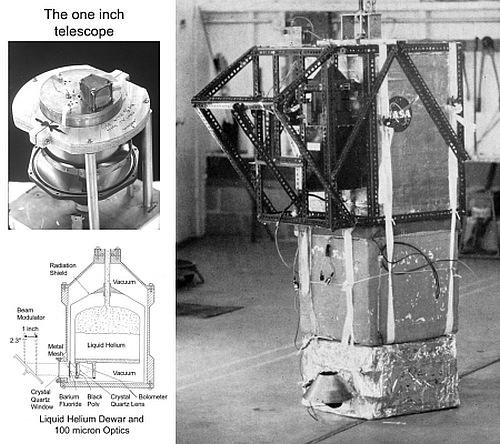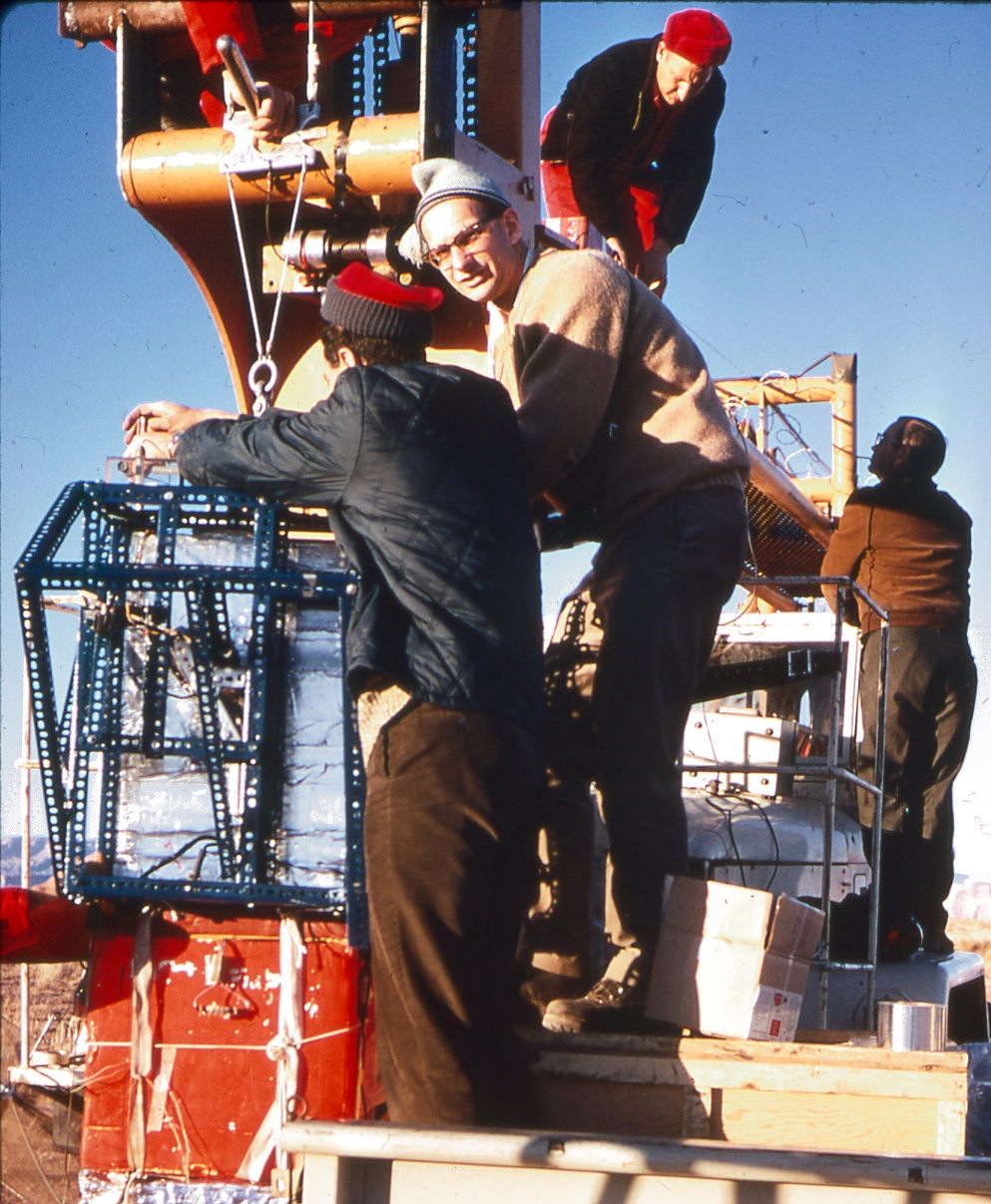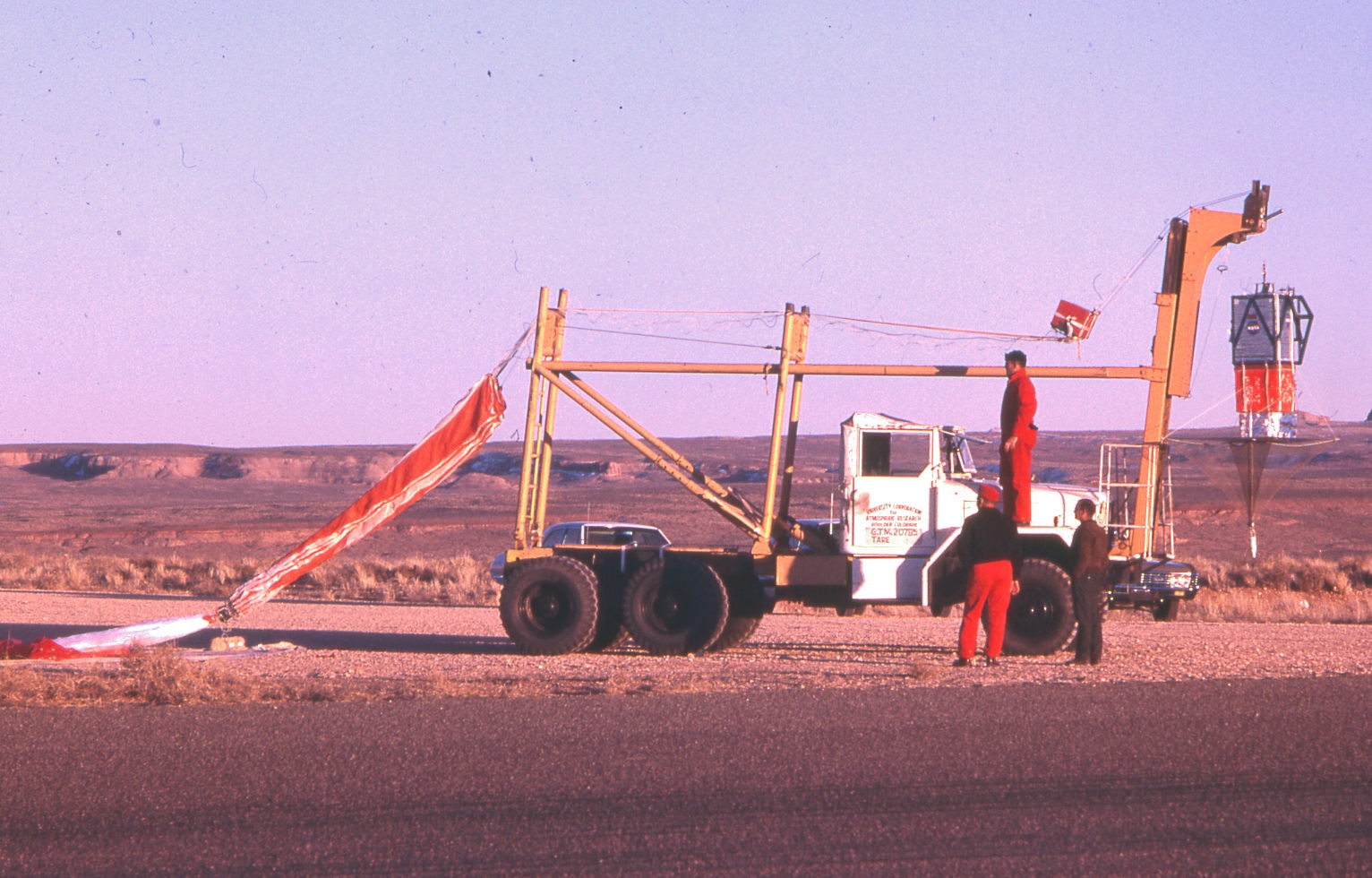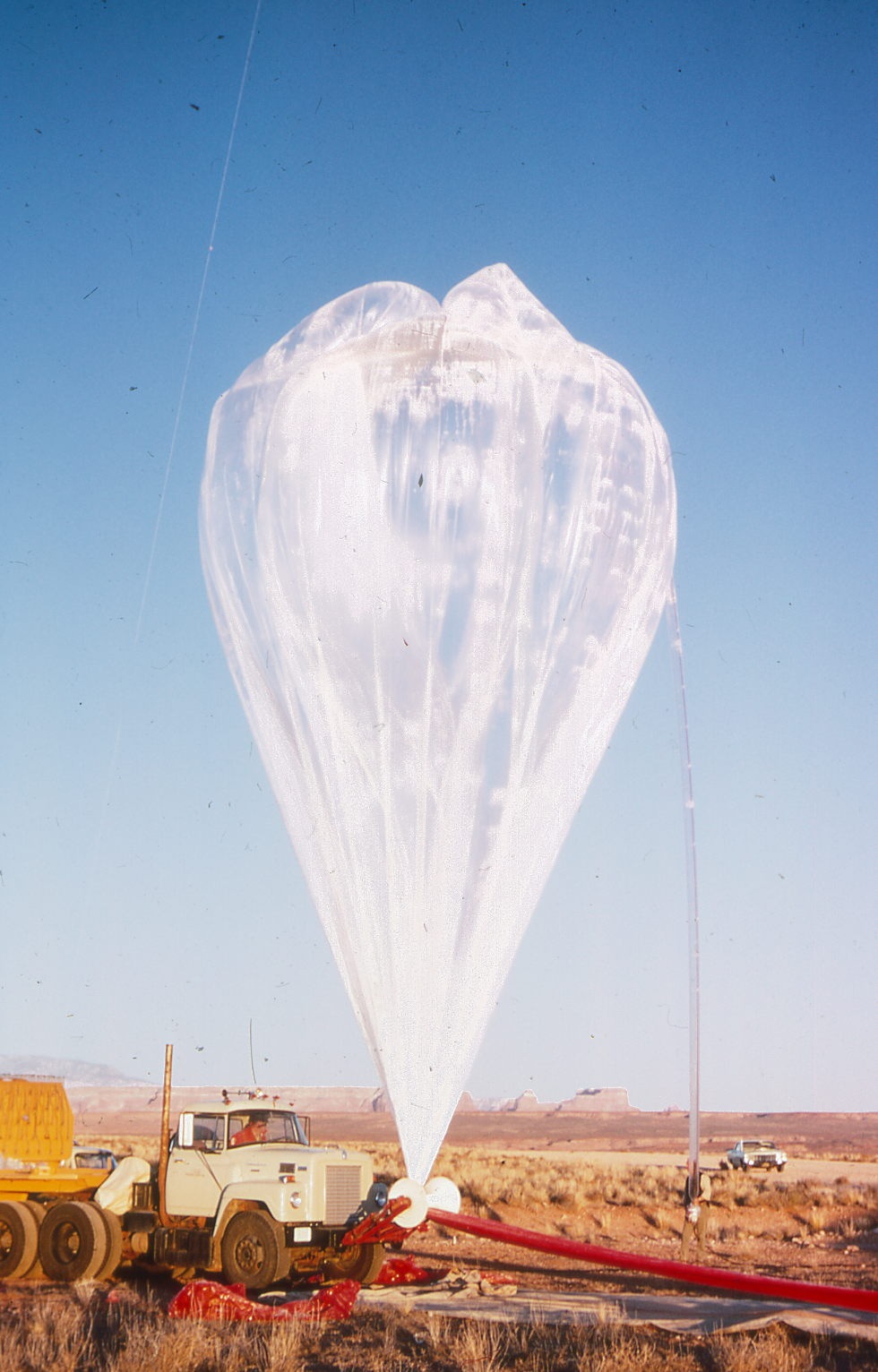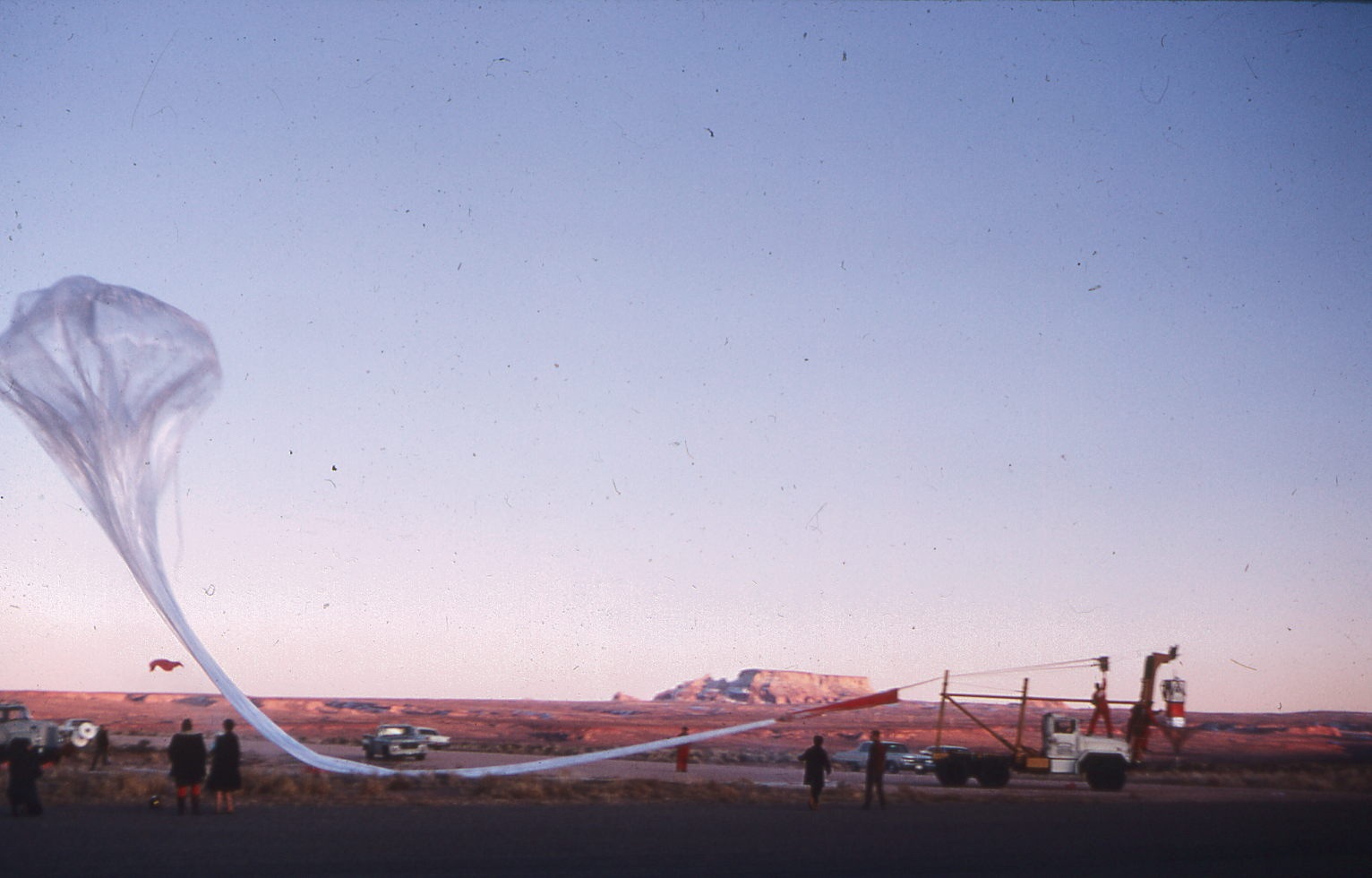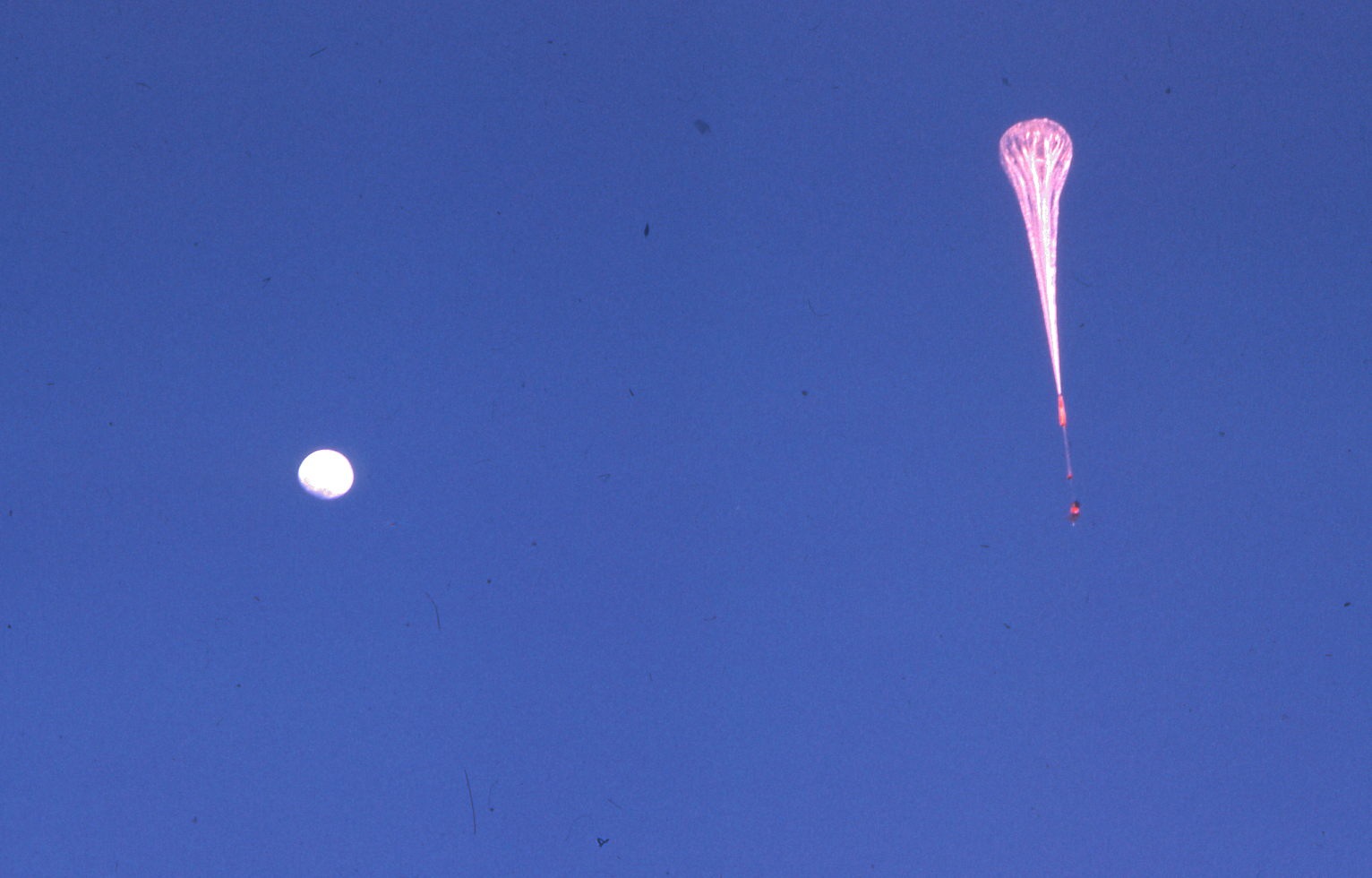Purpose of the flight and payload description
The objective of the flight was to perform a far-infrared survey of the sky searching for thermal radiation from interstellar grains and for other localized sources of far-infrared radiation. The instrument used was a balloon-borne germanium bolometer, cooled by liquid helium, used in associaton wth a telescope and spectral filters. It was developed by a team of the Goddard Institute for Space Studies.
At left we can see the gondola, an scheme of the cooling system of the telescope and the telescope itself (click to enlarge). The germanium bolometer was located at the focus of a 1-inch-aperture f/1.2 crystal quartz lens. The bolometer, lens, and associated 100 microns filter system were cooled to 1.8° Kelvin by liquid helium at an ambient atmospheric pressure encountered at 27 kilometers of altitude. The filter system included the 2.3-mm-thick crystal quartz lens, a 0.1-mm-thick black polyethylene, and a No. 300 electro-formed metal mesh, each at the temperature of liquid helium; a powdered barium fluoride in white polyethylene, black polyethylene, and a No. 300 mesh, each on the cold radiation shield; and finally a 1-mm-thick warm crystal quartz window.
The filter had an effective wavelength of 100 microns and an effective band width of 40 and the peak transmission was 12 per cent. The full beam width at half-power was 2.3º. The beam was reflected from a 45° gold-plated aluminum mirror located outside the Dewar which was rotated at 8.3 Hz about an axis 0.6º from its normal, which caused the telescope beam to wobble in an ellipse of horizontal axis 2.3º and elevation axis 1.6º. The bolometer preamplifier was followed by two phase-sensitive detectors operating in phases separated by 90°. This provided a system which was sensitive to discrete sources or flux gradients in the sky but not to constant and uniform instrumental, sky, or cosmic background. The direction of the gradient detected by output channel 1 turned out to be very nearly along the galactic plane during observations, while the gradient detected by channel 2 was perpendicular to the plane of the Galaxy. The phase-sensitive detector outputs were recorded on board by a 35-mm camera photographing meter pointers on continuously moving film. The film also recorded clock, pressure, and magnetometer readings.
The instrument was mounted in a balloon gondola constructed of aluminium slotted angle. The helium dewar vessel, preamplifier, modulation mirror and calibrator were mounted on the front. A compartment insulated with 3 in. thick styrofoam covered with aluminium foil contained the electronics, recorder and batteries. The dimensions of the gondola were 22 x 29 x 36 inches high. The weight not including the radio tracking beacon and balloon equipment was about 115 lb.
Details of the balloon flight
Balloon launched on: 2/21/1967
Launch site: Page Airport, Arizona, US
Balloon launched by: National Center for Atmospheric Research (NCAR)
Balloon manufacturer/size/composition: Zero Pressure Balloon Raven 360.000 cuft (1.5 Mil.)
Flight identification number: 280PA
End of flight (L for landing time, W for last contact, otherwise termination time): 2/22/1967 at 7:45 mst
Balloon flight duration (F: time at float only, otherwise total flight time in d:days / h:hours or m:minutes - ): 12 h 20 m
Landing site: Near Kingman, Arizona, US
Payload weight: 220 lbs
Successful flight
This was the second flight of the instrument. The balloon was launched from Page, Arizona on 21 February, 1967. It reached an altitude of 29,890 m at 17:25 mst and slowly descended to 27,140 m during the night; the package was parachuted the next day at 7:45 mst, landing near Kingman, Arizona. The area of sky surveyed covered more than 50 percent of the celestial sphere and most of the northern Milky Way.
External references
- A Far Infrared Sky Survey Phil. Trans. R. Soc. Lond. A 1969 264, 267-271
- Balloon Flight Record Facilities for Atmospheric Research Nº 3 - Spring 1967
- Far-infrared surveys of the sky Science, 157, 187-189
- NCAR Scientific Balloon Facility Annual Report, 1967 National Center for Atmospheric Research, January 1968
1609If you consider this website interesting or useful, you can help me to keep it up and running with a small donation to cover the operational costs. Just the equivalent of the price of a cup of coffee helps a lot.

